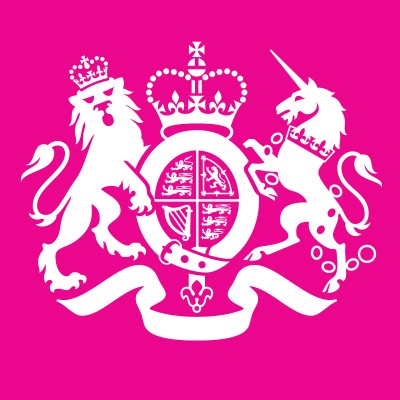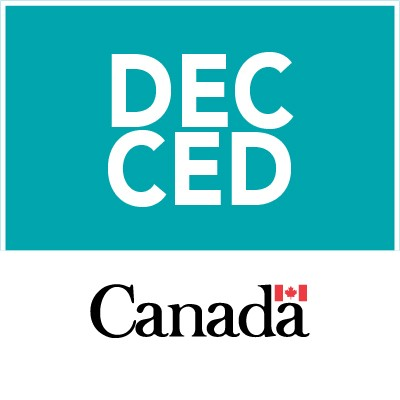G7 Summit: A Tectonic Shift Amidst Turbulent Waters
June 18, 2025, 12:42 pm

Location: United States, District of Columbia, Washington
Employees: 10001+
Founded date: 2000

Location: United Kingdom, Wales, Newport, Wales
Employees: 1001-5000
Founded date: 1954
Total raised: $12.06B
The G7 summit in Kananaskis, Canada, unfolded like a high-stakes chess game, with leaders maneuvering through a landscape fraught with geopolitical tensions. The absence of U.S. President Donald Trump after a mere day of discussions added an unexpected twist, leaving the remaining leaders grappling with unresolved issues and a lack of consensus.
As the summit commenced, the backdrop was painted with the ongoing war in Ukraine and the escalating crisis in the Middle East. Trump’s early departure was not just a logistical decision; it was a symbolic retreat from a gathering that had already begun to fracture under the weight of conflicting priorities. The remaining leaders, now a coalition of six, found themselves in a precarious position, attempting to forge a united front without the most polarizing figure in the room.
The discussions centered on several pressing topics, including the need to combat non-market policies that threaten global access to critical minerals. This issue is not just a matter of resources; it’s a lifeline for economies that depend on these materials for technological advancement. The leaders pledged to address the potential downsides of artificial intelligence, balancing innovation with the need to protect jobs and the environment. Yet, amidst these discussions, the absence of a joint statement on Ukraine was glaring. The U.S. stance, under Trump, diverged sharply from the collective view of the other G7 nations, who recognized Russia as the aggressor.
Ukrainian President Volodymyr Zelenskyy had arrived with hopes of securing further support, particularly in the form of military aid. However, with Trump’s early exit, those hopes dimmed. The U.S. had previously signed an agreement granting access to Ukraine’s mineral resources, but the lack of a unified front on sanctions against Russia left a void. The Canadian official’s comments about the absence of a consensus statement highlighted the disarray. The summit, intended to showcase solidarity, instead revealed deep divisions.
British Prime Minister Keir Starmer emerged as a key player, announcing new sanctions against Russia and advocating for a renewed coalition to address the conflict. His proactive stance contrasted sharply with Trump’s reluctance to engage fully with the situation. The “coalition of the willing” plan, aimed at establishing a ceasefire with European support, was met with skepticism. Trump’s dismissal of the idea underscored the challenges of achieving a unified approach.
Meanwhile, the specter of Iran loomed large over the summit. Israel’s military actions against Iran had escalated tensions, prompting calls for de-escalation. French President Emmanuel Macron’s caution against pursuing regime change in Iran resonated with the need for stability in the region. The leaders’ collective voice, however, was muted by Trump’s aggressive rhetoric, which threatened to exacerbate the situation further.
The summit’s atmosphere was charged, with leaders exchanging glances that spoke volumes. The infamous eye-roll by Italian Prime Minister Giorgia Meloni during a whispered conversation with Macron encapsulated the underlying tensions. The dynamics were shifting, and the camaraderie that once characterized G7 meetings felt strained.
Trade issues also loomed large, with Trump’s tariffs casting a long shadow. His administration’s imposition of steep tariffs on steel, aluminum, and automobiles had already strained relationships. The agreement with Starmer on a trade framework was overshadowed by Trump’s earlier blunders, including dropping the signed documents on the ground. Such moments highlighted the informal nature of the summit, where decorum was often sacrificed for practicality.
The G7 summit, once a bastion of unity among democratic nations, now resembled a fractured alliance. The absence of a comprehensive communique was telling. The leaders had prepared various draft documents, but without U.S. approval, they remained unapproved. The lack of a cohesive message on critical issues like migration, artificial intelligence, and critical minerals left the summit feeling incomplete.
As the dust settled on the first day, the remaining leaders faced the daunting task of navigating a world on the brink of multiple crises. The absence of Trump, while a relief for some, also highlighted the challenges of leadership in a time of division. The G7’s ability to address pressing global issues was now in question.
In the end, the Kananaskis summit served as a stark reminder of the shifting tides in global politics. The G7, once a symbol of collective strength, now found itself at a crossroads. The challenges ahead are formidable, and the path to unity remains fraught with obstacles. As the world watches, the question lingers: can the G7 adapt to a new reality, or will it become a relic of a bygone era? The answer may lie in the leaders’ ability to find common ground amidst the chaos.
As the summit commenced, the backdrop was painted with the ongoing war in Ukraine and the escalating crisis in the Middle East. Trump’s early departure was not just a logistical decision; it was a symbolic retreat from a gathering that had already begun to fracture under the weight of conflicting priorities. The remaining leaders, now a coalition of six, found themselves in a precarious position, attempting to forge a united front without the most polarizing figure in the room.
The discussions centered on several pressing topics, including the need to combat non-market policies that threaten global access to critical minerals. This issue is not just a matter of resources; it’s a lifeline for economies that depend on these materials for technological advancement. The leaders pledged to address the potential downsides of artificial intelligence, balancing innovation with the need to protect jobs and the environment. Yet, amidst these discussions, the absence of a joint statement on Ukraine was glaring. The U.S. stance, under Trump, diverged sharply from the collective view of the other G7 nations, who recognized Russia as the aggressor.
Ukrainian President Volodymyr Zelenskyy had arrived with hopes of securing further support, particularly in the form of military aid. However, with Trump’s early exit, those hopes dimmed. The U.S. had previously signed an agreement granting access to Ukraine’s mineral resources, but the lack of a unified front on sanctions against Russia left a void. The Canadian official’s comments about the absence of a consensus statement highlighted the disarray. The summit, intended to showcase solidarity, instead revealed deep divisions.
British Prime Minister Keir Starmer emerged as a key player, announcing new sanctions against Russia and advocating for a renewed coalition to address the conflict. His proactive stance contrasted sharply with Trump’s reluctance to engage fully with the situation. The “coalition of the willing” plan, aimed at establishing a ceasefire with European support, was met with skepticism. Trump’s dismissal of the idea underscored the challenges of achieving a unified approach.
Meanwhile, the specter of Iran loomed large over the summit. Israel’s military actions against Iran had escalated tensions, prompting calls for de-escalation. French President Emmanuel Macron’s caution against pursuing regime change in Iran resonated with the need for stability in the region. The leaders’ collective voice, however, was muted by Trump’s aggressive rhetoric, which threatened to exacerbate the situation further.
The summit’s atmosphere was charged, with leaders exchanging glances that spoke volumes. The infamous eye-roll by Italian Prime Minister Giorgia Meloni during a whispered conversation with Macron encapsulated the underlying tensions. The dynamics were shifting, and the camaraderie that once characterized G7 meetings felt strained.
Trade issues also loomed large, with Trump’s tariffs casting a long shadow. His administration’s imposition of steep tariffs on steel, aluminum, and automobiles had already strained relationships. The agreement with Starmer on a trade framework was overshadowed by Trump’s earlier blunders, including dropping the signed documents on the ground. Such moments highlighted the informal nature of the summit, where decorum was often sacrificed for practicality.
The G7 summit, once a bastion of unity among democratic nations, now resembled a fractured alliance. The absence of a comprehensive communique was telling. The leaders had prepared various draft documents, but without U.S. approval, they remained unapproved. The lack of a cohesive message on critical issues like migration, artificial intelligence, and critical minerals left the summit feeling incomplete.
As the dust settled on the first day, the remaining leaders faced the daunting task of navigating a world on the brink of multiple crises. The absence of Trump, while a relief for some, also highlighted the challenges of leadership in a time of division. The G7’s ability to address pressing global issues was now in question.
In the end, the Kananaskis summit served as a stark reminder of the shifting tides in global politics. The G7, once a symbol of collective strength, now found itself at a crossroads. The challenges ahead are formidable, and the path to unity remains fraught with obstacles. As the world watches, the question lingers: can the G7 adapt to a new reality, or will it become a relic of a bygone era? The answer may lie in the leaders’ ability to find common ground amidst the chaos.
